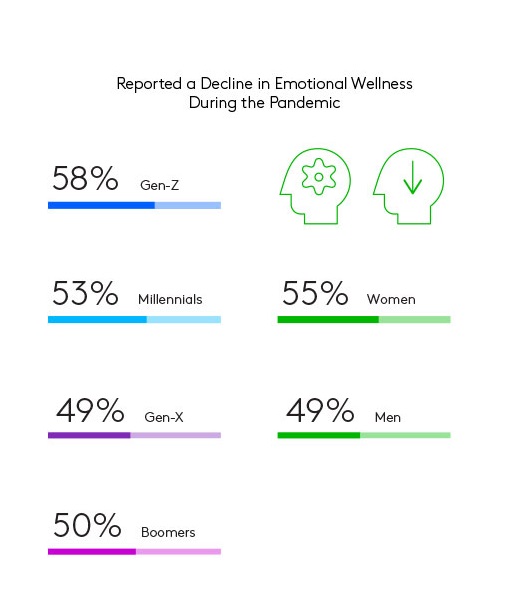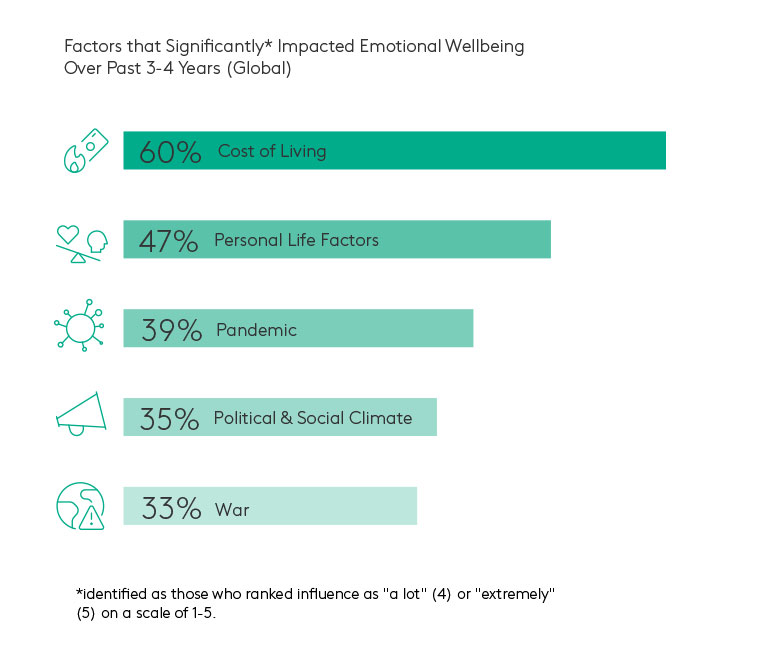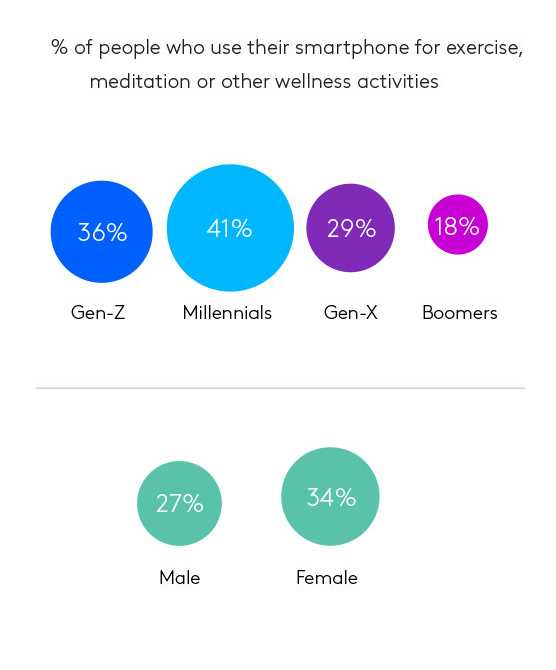The COVID-19 pandemic disrupted the workplace and transformed public education and the health sector. The supply chain crisis that ensued continues to reverberate through the global economy and has led to temporary shortages of critical goods such as powdered milk and medical equipment.
Individuals, communities, and countries have shown extraordinary resilience in weathering the pandemic and its aftershocks. However, as the post-pandemic recovery accelerates, the world now confronts a cost-of-living crisis.
Inflation has recently reached levels not seen since the early 1980s, causing central banks to tighten the money supply. Stock market volatility buffets portfolios and pensions and it is unclear how monetary tightening might negatively affect job growth and employment.
In the political realm, the Russian invasion of Ukraine in February 2022, as well as ongoing political tensions both domestically and internationally, only exacerbate the uncertainties of this era. The world seems to be facing a series of intersecting crises in a way not seen in decades.
Kantar is asking people worldwide how the pandemic, the cost-of-living crisis, and other factors are impacting global emotional wellbeing. To evaluate how perceptions of emotional wellness have changed from the pre-pandemic stage (approximately 4 years ago) to the present, we conducted a global survey of ten countries that included analysis of age and gender variables.
While emotional wellbeing is showing overall signs of a post-pandemic recovery, the cost-of-living crisis is a major wellness stressor for our global respondents.
We also found that younger generations are most likely to use smartphones to access health support and improve wellness.
Here we explore a few of the key insights.
Emotional wellness took a hit but is recovering from the pandemic
The COVID-19 pandemic has had a demonstrable negative impact on emotional wellness. In our study, 52% of respondents confirmed that their emotional wellness declined during the pandemic.
Women were more likely to experience a decline in emotional wellness, with 55% of female respondents indicating that the pandemic had a negative impact, compared to 49% of men.
The results also show that age had a notable though relatively small effect on emotional wellness. Gen-Z, inclusive of those aged 18 – 24, had the highest proportion (58%) of respondents who indicated that their emotional wellness declined during the pandemic. This result compares to 53% of Millennials (aged 25 – 39), 49% of Gen-X (aged 40 – 55), and 50% of Boomers (aged 56 – 75), who noted a decline.
Age has had a stronger effect on whether respondents have sought mental health support over the last few years. Gen-Z and Millennials have been more likely to seek mental health support, at rates of 40% and 39%, respectively. However, the percentage of respondents in the Gen-X cohort who have sought mental health support drops to 28%, while only 16% of Boomers have sought support.

These results suggest that while different age cohorts experienced a decline in emotional wellness at relatively similar levels, age matters when determining whether an individual seeks mental health support. Future pandemic preparedness could be improved by further research on the drivers of these results.
On the upside, however, 81% of total respondents indicate that they did receive the support that they needed to address emotional wellness issues.
This result is encouraging, though we should also acknowledge that approximately one-fifth of respondents do not believe they received adequate support. This suggests that mental health professionals and employers need to be mindful that many people are still experiencing negative emotional effects from the pandemic and may need assistance.
The cost-of-living crisis is a significant strain on emotional wellbeing
We found that while most people are recovering from the emotional impact of the pandemic, the cost-of-living crisis is taking a huge toll on wellbeing.
Our global respondents are 54% more likely to say the cost-of-living crisis has significantly impacted their emotional wellness compared to the pandemic. The crisis includes increased food, fuel, and rent costs, as well as the price of other products and services.
We asked people to rank five factors and their impact on their emotional wellness over the last 3 to 4 years, ranging from 1 (not at all) to 5 (extremely) impactful. The factors included cost-of-living, personal life factors, the pandemic, political and social climate, and war.
Focusing on responses that rank these factors as either level 4 (a lot) or level 5 (extremely), 39% of respondents find the pandemic stressful, followed by 35% who rank political and social climate and 33% who rank war as a lot or extremely stressful. Personal life factors are also ranked by less than half of the respondents (47%) at level 4 or 5.
However, of the five options listed, the most important stressor for emotional wellness is the cost-of-living crisis, with 60% of those surveyed ranking this factor at level 4 or 5. Given that inflation seems unlikely to recede soon, the cost-of-living crisis might begin to roll back post-pandemic gains in emotional wellness, particularly if the global economy tilts into a recession.

Millennials are the most likely to use their smartphones for wellness support
This study also looks at the role of digital technology in supporting individual wellness from a variety of angles, including the level of stress respondents feel when they cannot access their smartphone and parents’ perceptions of how smartphone use affects their children.
With respect to smartphones as a wellness tool, the data show that millennials are the most likely to use their smartphone for exercise, meditation, and other wellness activities. While 30% of respondents overall use their smartphones in these ways, 41% of millennials do, compared to 36% of Gen-Z, 29% of Gen-X, and 18% of Boomers.
Women are more likely than men to use smartphones for wellness activities, with 34% of female respondents doing so, compared to 27% of men.

Get more answers
For more insights from this comprehensive study, access the complete Community Report: Connecting with the Health and Wellness Community.
Find additional generational, gender, and country-specific insights on the impact of the pandemic and the cost-of-living crisis on emotional wellness and the ways in which respondents use digital technology to access wellness resources.
About this study
This research was conducted online among 10,000 respondents sourced from the Kantar Profiles Audience Network. We surveyed 1,000 participants in each of ten countries, including the US, Brazil, UK, Germany, France, Spain, South Africa, China, India, and Singapore.
All interviews were conducted as online self-completion between August 19 -31, 2022, and collected based on local census distributions for age and gender. Gen Z was identified as ages 18 -24, Millennials ages 25-39, Gen-X ages 40 – 55, and Boomers ages 56 – 75.
